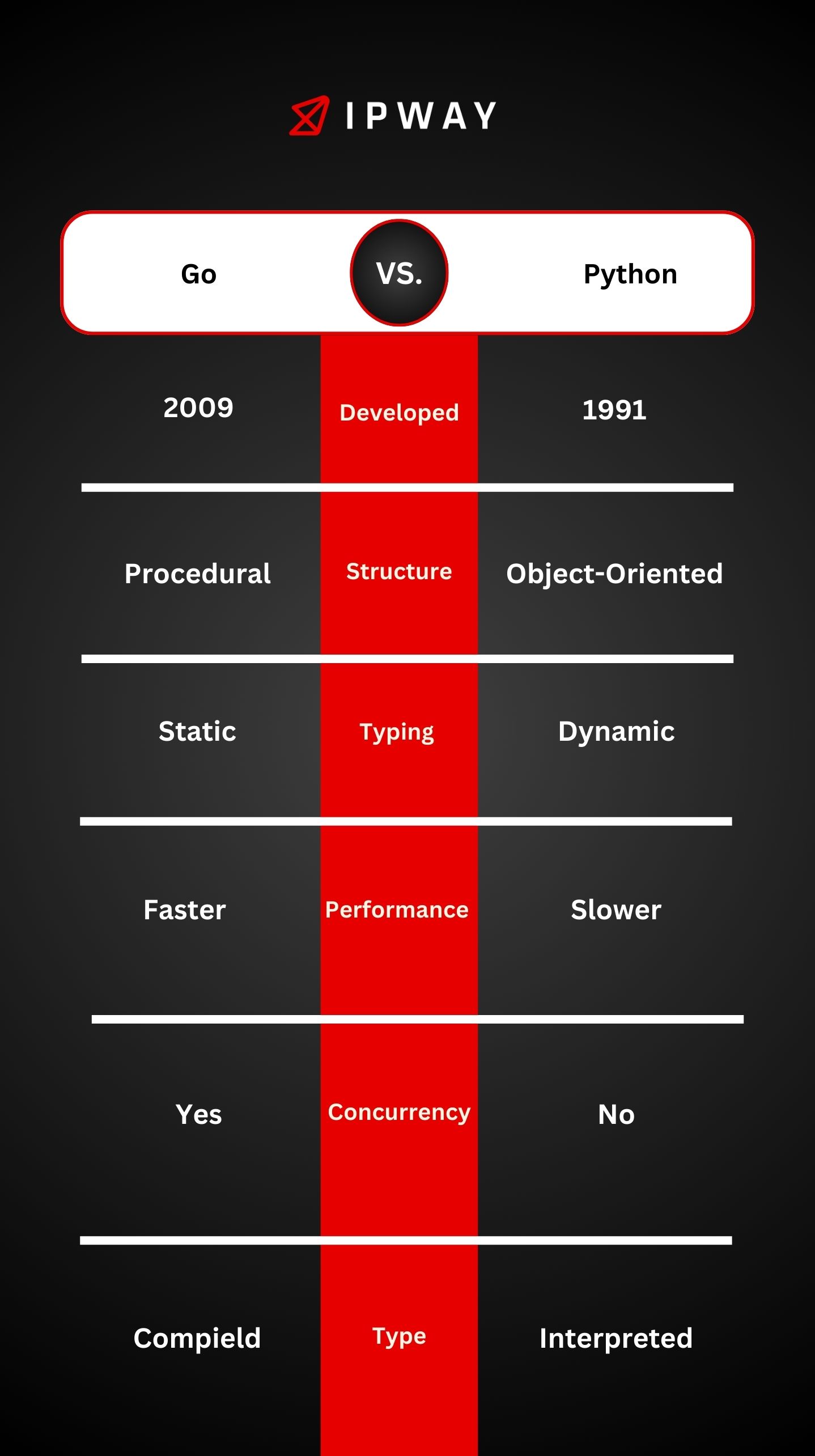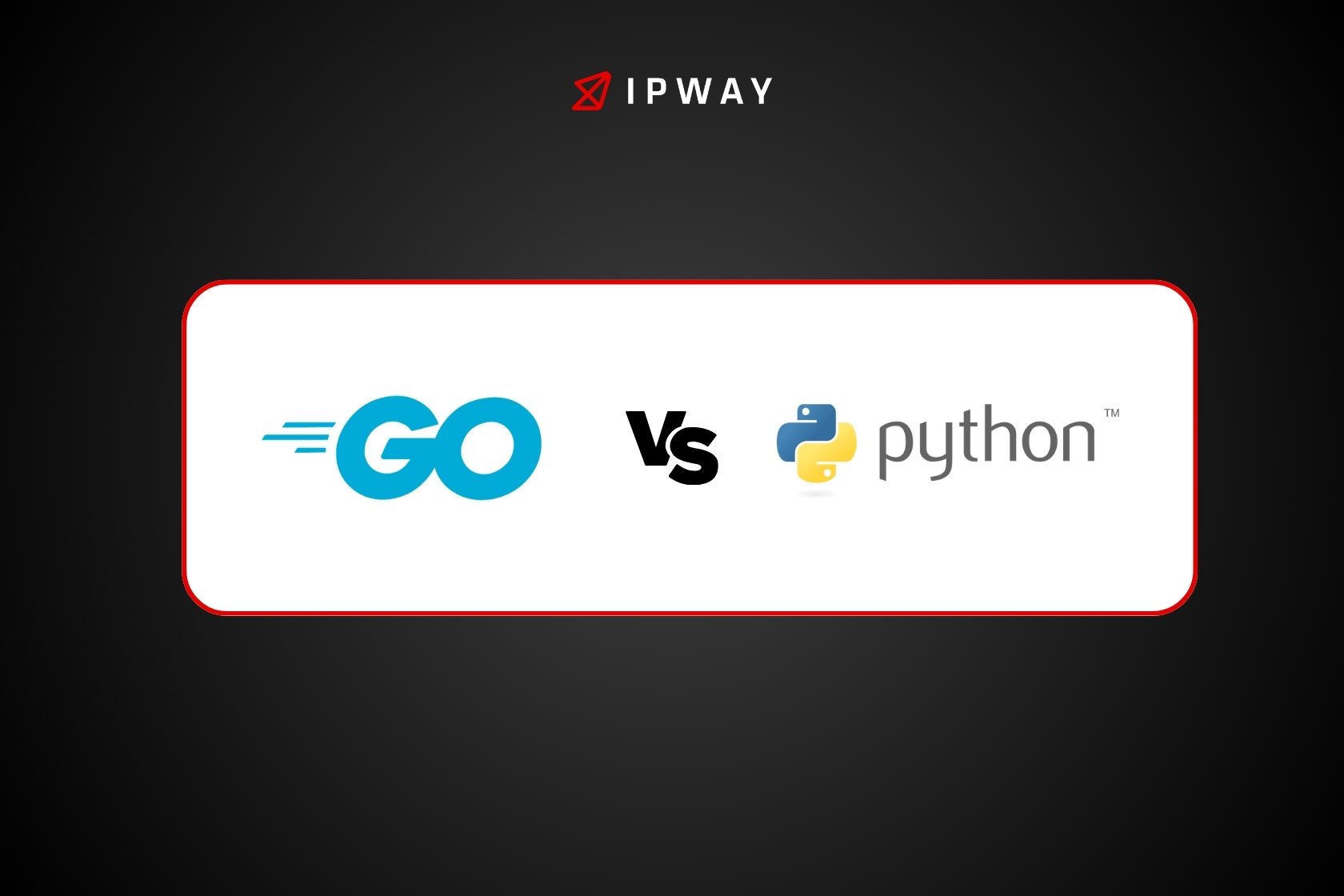Go vs Python – when it comes to programming languages selecting the tool for particular tasks can greatly impact how efficiently and effectively the development process unfolds. In the landscape of programming languages Go (also known as Golang) and Python have risen as popular options among developers especially in fields like web scraping and machine learning. This piece delves into a comparison of these two robust languages to assist you in deciding which one could be the ideal choice, for your upcoming project.
Lets take a look at comparing Go vs Python for web scraping in this article. Whether you value speed and scalability or user friendliness and community assistance both languages provide tools for scraping tasks. We’ll examine their performance ability to manage websites and situations and the libraries available, in each language. Lets delve into it!
What Is Go?
Go combines the speed benefits of compiled languages with the ease of type inference and a simpler syntax, similar, to typed languages. This makes it perfect for web scraping tasks that demand efficiency and scalability guaranteeing data extraction.
Go is a comprehensive standard library enables web development, data handling and networking tasks making it an ideal choice for web scraping projects. Supported by a community and backed by Google Go is constantly progressing and enhancing its capabilities.
What Is Python?
Python is known for being an interpreted high level programming language that is widely used for web scraping. Its broad standard library and dynamic typing capabilities make it a strong choice, for extracting and manipulating data especially when combined with a range of third party libraries available.
While Pythons interpreted design may affect speed its ability to quickly create prototypes often leads to it being the pick for web scraping projects.
Python benefits greatly from its lively community, which is always adding to a growing collection of libraries and frameworks. This teamwork greatly lessens the burden, on developers who want to create scraping solutions without having to start from one.
Advantages of Go vs Python
Every programming language comes with its strengths that cater to various programming requirements and settings. In the following sections we explore the benefits that Python and Go bring to the table positioning them as leaders, in their respective domains.

Python Advantages
Extensive Libraries and Frameworks: Python is known for its range of libraries and frameworks that serve various programming purposes. In the field of data science and machine learning tools like Pandas, NumPy and Scikit learn simplify data tasks whereas TensorFlow and Keras play a role in creating advanced machine learning models. For web development platforms like Django and Flask offer resources to build durable and scalable web applications, with ease.
Community Support and Ecosystem: Python has a global community of programmers. This active community plays a role in providing regular updates detailed documentation and a wide variety of third party modules and tools. Thanks, to this support system Python is easy for beginners to get started with and remains at the forefront of technology for all users.
Versatility Across Disciplines: Pythons ease of use doesn’t compromise its capabilities. The flexibility of the language enables its use in a range of industries, including web development, software engineering, scientific computing and artificial intelligence. This versatility allows Python developers to smoothly switch between project types.
Ease of Learning and Use: Pythons structure is frequently characterized as straightforward and easy to understand making it a great starting language for beginners in programming. The focus on clarity and brevity enables developers to produce sustainable code leading to a smoother learning process and faster progress, in development tasks.
Go Advantages
Performance and Efficiency: Go is converted into machine code providing an advantage, in performance especially in networking and handling multiple tasks simultaneously. Its operational efficiency makes it well suited for microservices, cloud services and other backend systems.
Designed and Concurrency: A key characteristic of Go is its capability, for concurrent and parallel programming. Through the use of Go routines and channels developers can create scalable applications that manage multiple tasks concurrently with minimal additional burden.
Simplicity and and Reliability: The design philosophy of Go focuses on simplicity and predictability. Its syntax is straightforward. Its tools are designed with a focus on clarity and minimalism. This approach not helps beginners learn Go easily but also lightens the mental burden, for experienced programmers enabling them to concentrate on solving real world issues rather than struggling with intricate language intricacies.
Strong Standard Library: Go has a standard library that caters to various programming requirements, such as managing input/output tasks and internet requests as well as working with raw data and text. This comprehensive library minimizes the need, for packages making development smoother and improving code reliability.
Robust Garbage Collection: Go includes a garbage collection system that offers top notch memory management while maintaining high performance levels. This functionality proves advantageous, in extensive systems where manual memory handling could lead to errors and inefficiencies.
Go vs Python for Web Scraping Tasks
Gathering data from websites through web scraping is an used practice in data collection and analysis. Go vs Python, both have their strengths, for web scraping their methods and tools vary, affecting how well they work in situations.
Python for Web Scraping
Python is commonly preferred for web scraping because of its easy to use libraries that are tailor made for this task. Tools, like BeautifulSoup, Scrapy and Lxml simplify the process of parsing HTML and XML documents which are frequently used in web content. These libraries handle much of the intricacy associated with web scraping enabling developers to concentrate on extracting data than dealing with the complexities of network requests and HTML parsing.
Python is commonly preferred for web scraping because of its easy to use libraries that are tailor made for this task. Tools, like BeautifulSoup, Scrapy and Lxml simplify the process of parsing HTML and XML documents which are frequently used in web content. These libraries handle much of the intricacy associated with web scraping enabling developers to concentrate on extracting data than dealing with the complexities of network requests and HTML parsing.
Beautiful Soup is well liked for its capability to manage coding and offer straightforward techniques for exploring, finding and adjusting the parsed structure.
Scrapy, however provides a framework for web scraping that comes with integrated features, for extracting information managing URLs and saving the collected data.
Ease of Use: Pythons syntax, along, with the array of scraping libraries available can greatly minimize the code required to kick off a web scraping project. This efficiency not accelerates development but also cuts down on maintenance expenses.
Python also works well with data analysis and manipulation tools making it a great choice, for projects that involve additional processing and examination of the gathered data.
Go for Web Scraping
Although not as widely used as Python in the realm of web scraping, Go stands out as an option for tackling demanding and parallel scraping assignments. Gos ability to efficiently manage requests at once makes it ideal, for scraping extensive amounts of web content or handling websites with heavy visitor traffic.
Concurrency: Gos inherent method of handling scraping tasks simultaneously using goroutines and channels is quite effective. This approach proves to be beneficial especially when expanding web scraping activities to manage data sets or extract real time data.
Performance: Go programs are compiled into machine code allowing them to run swiftly compared to Pythons interpreted scripts. This speed advantage can play a role, in situations where timing and quick responses are of utmost importance.
Robustness: Go’s native networking and HTTP client capabilities offer a base for constructing durable web scraping bots. Its standard library offers assistance for HTTP protocols managing cookies and other functionalities lessening the dependence, on external libraries.
Nevertheless learning Go can be a bit challenging due, to its curve. It doesn’t offer as many specialized web scraping tools as Python does. This could lead to writing code and needing a better grasp of the fundamentals.
Go vs Python for Machine Learning
Python is widely recognized as the language for machine learning due to its ease of use and effectiveness which are important factors in handling large datasets, a key component of ML. Pythons user friendly design, simple syntax and impressive performance make it a popular option for these tasks. However some may question the need to consider Golang, for ML given Pythons strong capabilities.
Golangs strengths are rooted in its features. Similar to Python it offers an easy learning curve. Is known for being user friendly. However Golang sets itself apart by excelling in performance in concurrent programming and simplifies deployment by compiling into a single binary file eliminating the need to handle dependencies. Although Golang does have its drawbacks some of them are less relevant when it comes to ML tasks. As a result, with benefits that cater to certain ML applications Golang could be worth considering in the realm of machine learning.
Conclusion
When deciding between Go vs Python, it’s important to consider the needs of your project. If you prioritize speed and performance Go could be the option. On the hand if you value user friendliness and robust library support especially for tasks, like machine learning and data analysis Python is likely the better choice.
Choosing between Go vs Python relies on the project details, individual or team skills and the future objectives of the software you plan to create. Knowing the capabilities and uses of Go vs Python can help you select the suitable option, for your programming requirements.
Experience the groundbreaking features of IPWAY’s inventive solutions, set to transform your web scraping endeavors with a more advanced and efficient methodology.
